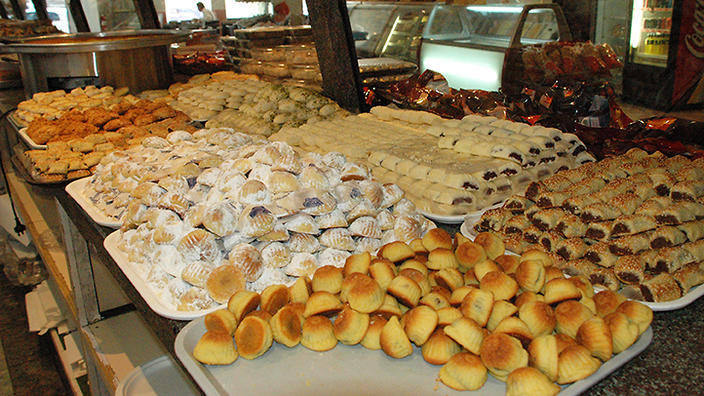Introduction: Syrian Cuisine
Syrian cuisine is known for its diverse flavors and aromatic spices. It is a result of the country’s rich history and cultural influences. Syrian cuisine is influenced by the Mediterranean, Middle Eastern, and Arabian Peninsula’s cuisines. The country’s cuisine utilizes a wide range of ingredients such as meats, grains, vegetables, and fruits.
The Influence of Turkish Cuisine
Syria and Turkey share a long history, which has resulted in an exchange of ideas, customs, and culture, including cuisine. Turkish cuisine has influenced Syrian cuisine significantly. Syrian dishes influenced by Turkish cuisine include kebabs, stews, and meatballs. These dishes are often accompanied by yogurt-based sauces, which are common in Turkish cuisine.
The use of spices such as cinnamon, cumin, and allspice in Syrian cuisine are also influenced by Turkish cuisine. Turkish sweets like baklava and Turkish Delight are popular in Syria and can be found in Syrian markets and pastry shops.
The Influence of Lebanese Cuisine
Lebanon and Syria share similar geography and culture, which has resulted in an exchange of culinary ideas. Lebanese cuisine has a significant influence on Syrian cuisine. The two countries share many dishes, such as kibbeh, tabbouleh, and hummus.
Lebanese cuisine has also influenced Syrian cuisine in the use of sumac and za’atar. Sumac is used to add a tangy flavor to dishes, while za’atar is a mixture of spices that is often used in dips and as a seasoning for meats.
Turkish and Lebanese Ingredients in Syrian Dishes
Turkish and Lebanese ingredients are commonly found in Syrian dishes. Ingredients like chickpeas, lentils, and bulgur wheat are used in Syrian and Turkish cuisines. In addition, Lebanese ingredients such as pomegranate molasses and tahini are also used in Syrian cuisine.
Turkish and Lebanese ingredients are often used in Syrian stews and soups. For example, in Syrian lentil soup, red lentils are cooked with onions, garlic, cumin, and coriander, and then topped with a drizzle of pomegranate molasses.
Popular Syrian Dishes with Turkish and Lebanese Influences
Several popular Syrian dishes are influenced by Turkish and Lebanese cuisines. One of the most popular dishes is shawarma, which is a Middle Eastern sandwich made with marinated meat, vegetables, and sauces. The use of pomegranate molasses in the Syrian version of shawarma is influenced by Lebanese cuisine.
Another popular dish is kibbeh, which is a meatball made with bulgur wheat and spices. The dish is popular in both Lebanon and Syria. In Syria, kibbeh is often served with a yogurt-based sauce, which is influenced by Turkish cuisine.
Conclusion: Syrian Cuisine: A Blend of Cultures
Syrian cuisine is a blend of cultures, including Turkish and Lebanese influences. The country’s culinary history has resulted in a diverse cuisine that utilizes a wide range of ingredients and cooking techniques. The use of spices, sauces, and ingredients from neighboring countries has enriched Syrian cuisine and made it unique. Syrian dishes influenced by Turkish and Lebanese cuisines have become popular worldwide, and their popularity continues to grow.

